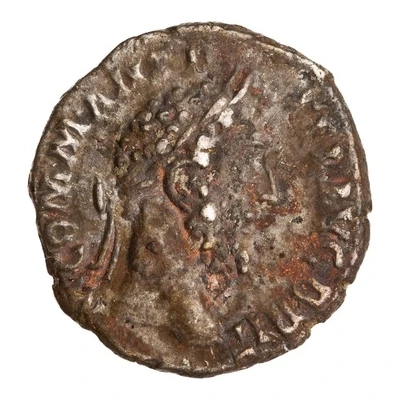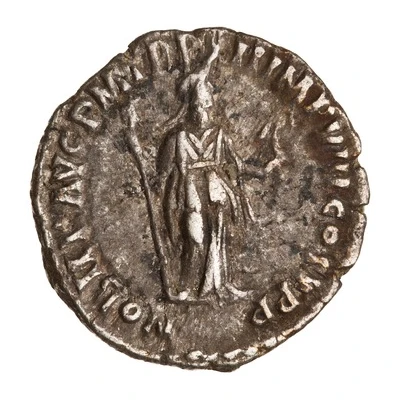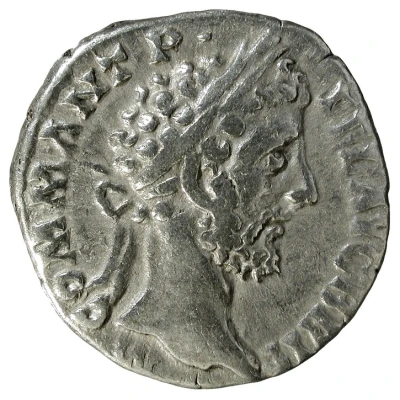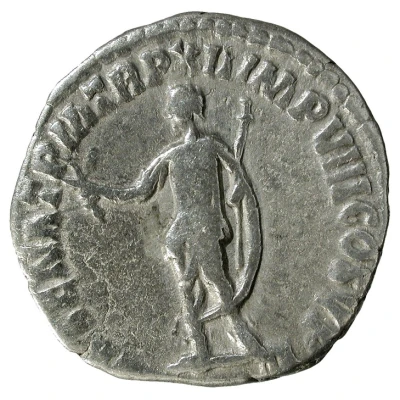


© American Numismatic Society (ANS)
Denarius - Commodus NOBILIT AVG P M TR P XII IMP VIII COS V P P; Nobilitas
| Silver | 2.9 g | 17.5 mm |
| Issuer | Rome › Roman Empire (27 BC - 395 AD) |
|---|---|
| Emperor | Commodus (Lucius Aurelius Commodus) (177-192) |
| Type | Standard circulation coin |
| Years | 186-187 |
| Value | 1 Denarius |
| Currency | Denarius, Reform of Augustus (27 BC – AD 215) |
| Composition | Silver |
| Weight | 2.9 g |
| Diameter | 17.5 mm |
| Shape | Round (irregular) |
| Technique | Hammered |
| Orientation | Variable alignment ↺ |
| Demonetized | Yes |
| Updated | 2024-10-05 |
| Numista | N#265368 |
|---|---|
| Rarity index | 97% |
Reverse
Nobilitas, draped, standing right, holding sceptre in right hand and stattuette of Minerva in extended left hand.
Script: Latin
Lettering: NOBILIT AVG P M TR P XII IMP VIII COS V P P
Translation:
Nobilitas Augusti, Pontifex Maximus, Tribunicia Potestate Duoecima, Imperator, Octavum, Consul Quintum, Pater Patriae.
The nobility of the emperor (Augustus). High priest, holder of tribunician power for the twelfth time, supreme commander (Imperator) for the eighth time, consul for the fifth time, father of the nation.
Comment
Mass varies: 1.965–3.687 g;Diameter varies: 17.38–18 mm;
Example of this type:
American Numismatic Society (ANS)
Source:
Online Coins of the Roman Empire (OCRE)
Interesting fact
One interesting fact about this coin is that it features an image of the Roman emperor Commodus, who was known for his excesses and tyrannical behavior during his reign. Despite his controversial rule, the coinage issued during his reign, including this denarius, is considered to be some of the most well-crafted and aesthetically pleasing of the Roman Empire. The coin's design, which includes an image of Commodus wearing a laurel wreath and holding a scepter, reflects the imperial propaganda of the time, which sought to portray the emperor as a powerful and benevolent leader.

